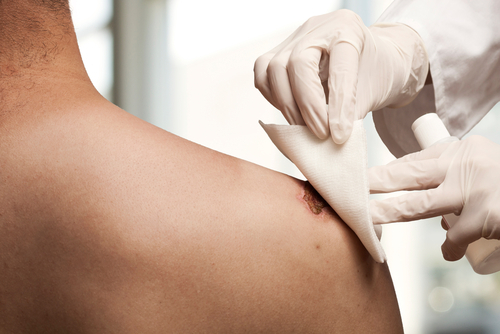New biodegradable nanofibre bandage enables faster healing
IANS Jan 15, 2019
An international team of scientists has developed a new bandage with a strong antibacterial effect and which can be kept on over long periods of time without needing to be changed, thereby accelerating skin regrowth and reducing the risk of infection.

The new dressing material has great potential for future application in the healing of wounds, does not require changing, and can literally be put on over top of one another as they degrade, the Sputnik news agency reported. The traditional use of an antiseptic in the treatment of wounds, consisting of washing the affected area with a solution and using gauze dressing to increase the outflow of fluids, repeated several times.
However, such treatment, particularly the use of antibiotics kill not only dangerous bacteria, but also the useful bacteria. And when dressings are changed, the fragile area undergoing healing is disturbed, causing severe pain to patients.
But according to scientists from the Moscow-based MISiS National University of Science and Technology, and Brno University of Technology from the Czech Republic, the new biocompatible dressing material can act locally on the area of inflammation. As the material slowly releases their antibiotic, the dressings gradually dissolve on the skin.
The material was made using polycaprolactone nanofibres -- a biocompactable, bioresorbable material -- and attached gentamicin, a broad-spectrum antibiotic, to the fibres. "What we found was that the action was prolonged: we observed a significant decrease in the number of bacteria even 48 hours after the material was applied," Elizaveta Permyakova from the MISiS was quoted as saying. "Usually, surfaces with an antibacterial effect fulfill their potential within the first day or even the first hours of use," Permyakova explained.
In the study, reported in the Materials and Design academic journal, the team performed experiments using three strains of E. coli bacteria, with the strains showing varying levels of resistance to the antibiotics, but nonetheless combatted against effectively by the dressing. The new material is potentially applicable not only for treatment to heal skin, but to treat inflammatory bone diseases such as osteoporosis and osteomyelitis, the report noted.
-
Exclusive Write-ups & Webinars by KOLs
-
Daily Quiz by specialty
-
Paid Market Research Surveys
-
Case discussions, News & Journals' summaries